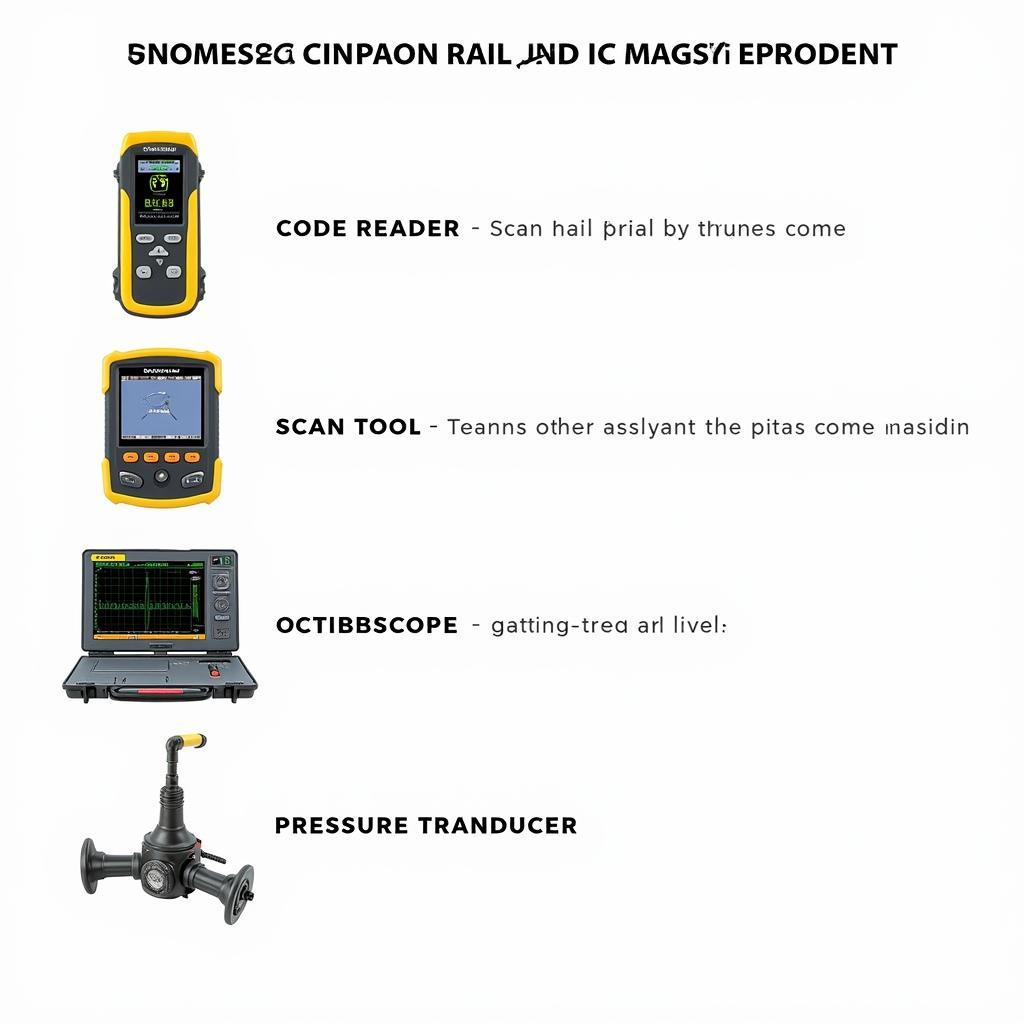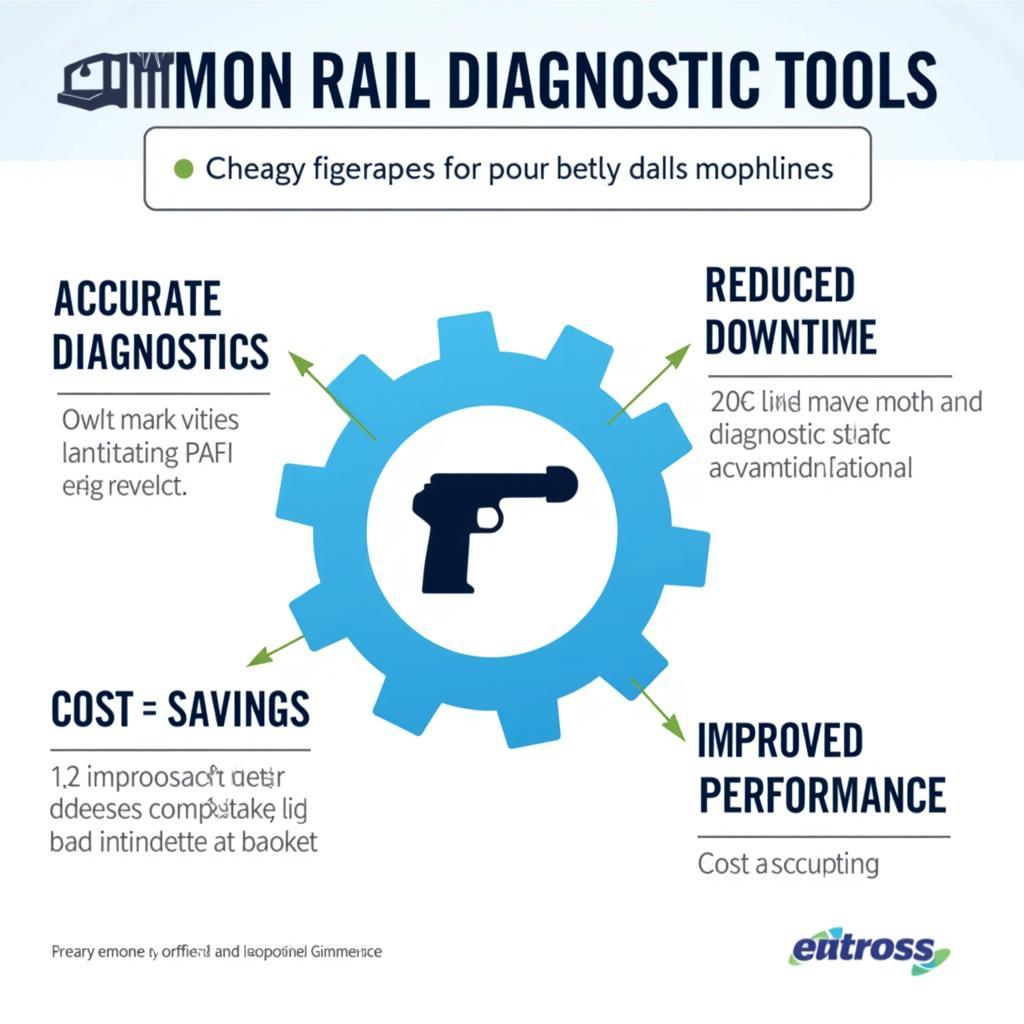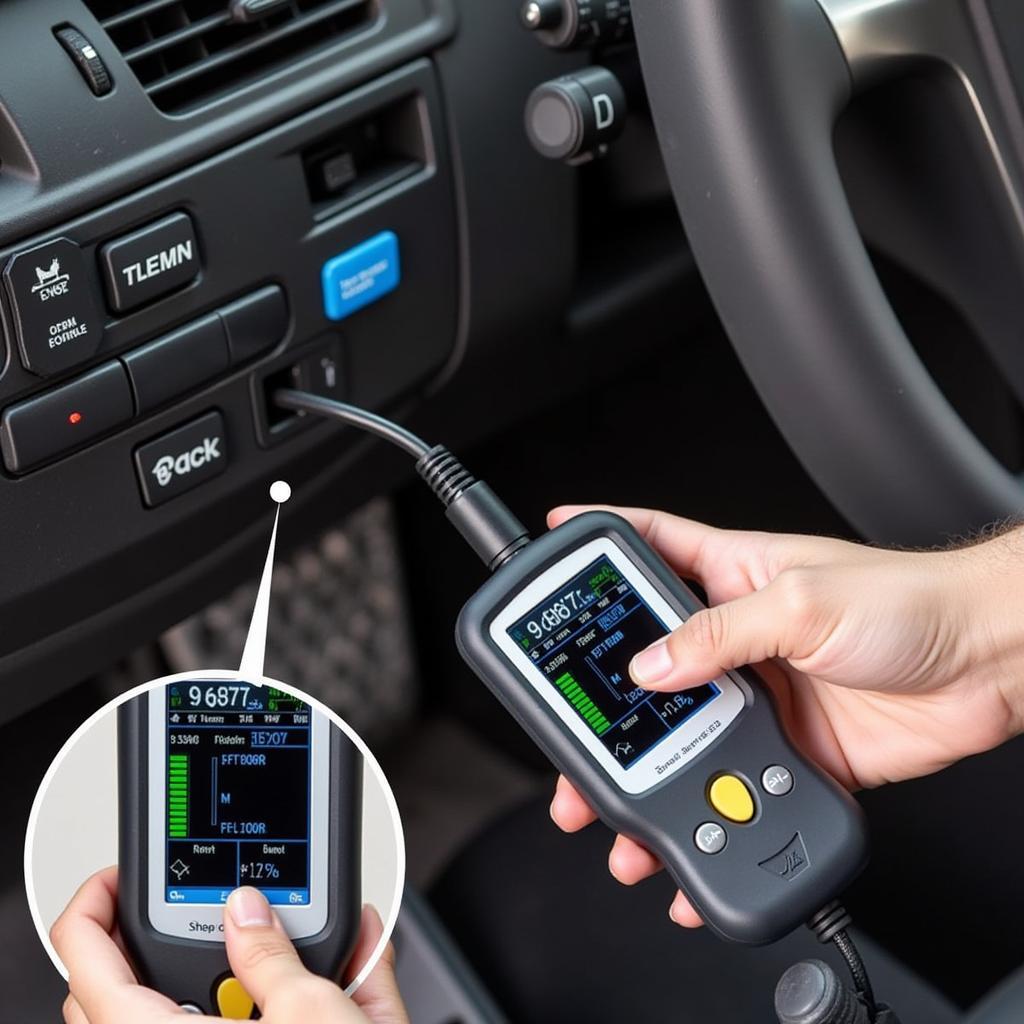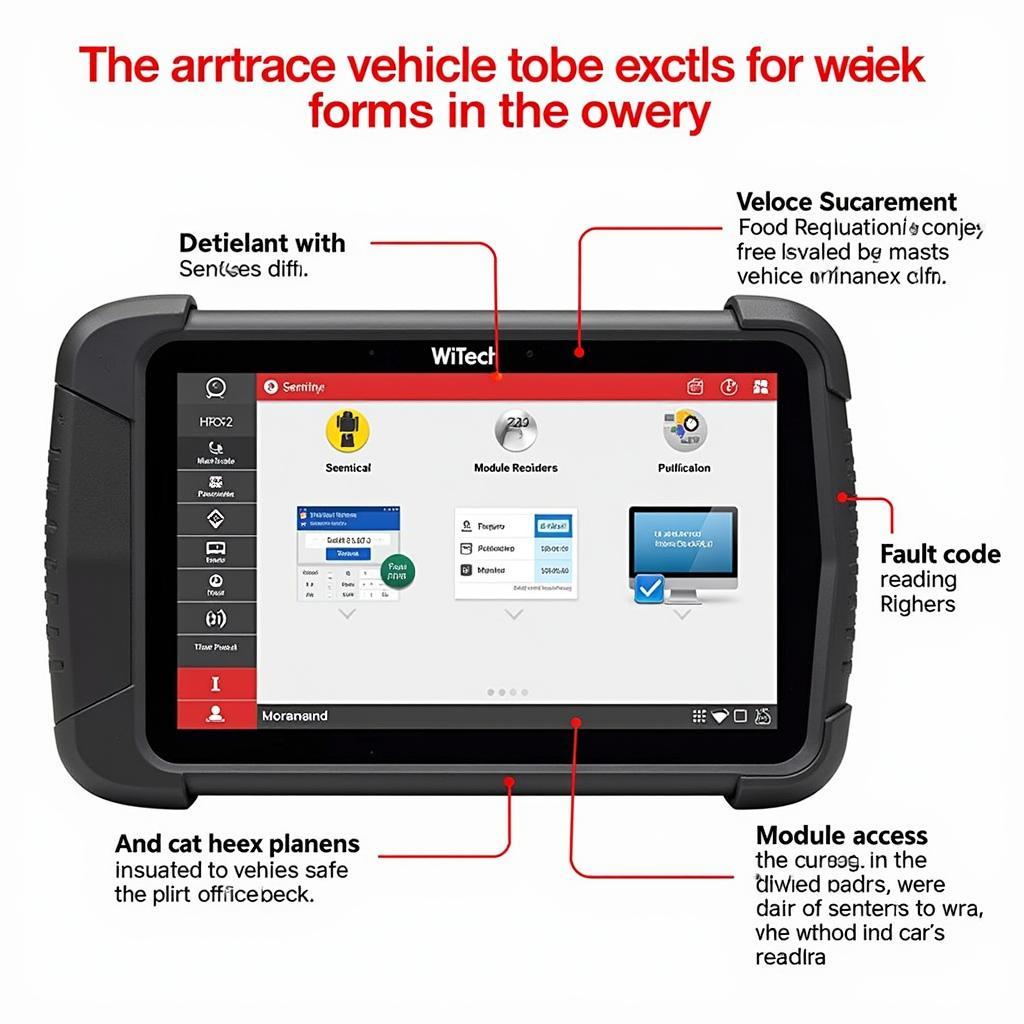Common Rail Diagnostic Tools are essential for anyone working with modern diesel engines. These sophisticated systems require specialized equipment to pinpoint issues accurately and efficiently. This guide delves into the world of common rail diagnostics, providing valuable insights for car owners, repair shop managers, and technicians alike. Understanding how these tools work and how to use them effectively can save you time, money, and frustration.
As diesel engine technology advances, so does the complexity of its components. The common rail injection system, a cornerstone of modern diesel engines, is a prime example. Its intricate network of sensors, actuators, and electronic control units (ECUs) demands precise diagnostic capabilities. That’s where common rail diagnostic tools come into play. These tools offer the ability to delve deep into the system, reading live data, running tests, and pinpointing faults with unprecedented accuracy. Whether you’re a seasoned technician or a car owner keen on understanding your vehicle better, familiarizing yourself with these tools is crucial. Check out our selection of snowmobile diagnostic tools for other specialized diagnostic equipment.
What are Common Rail Diagnostic Tools?
Common rail diagnostic tools are specialized pieces of equipment designed to interface with the electronic control unit (ECU) of a common rail diesel engine. They provide access to a wealth of information, allowing users to monitor live data streams, perform diagnostic tests, and identify the root cause of performance issues. These tools range from basic code readers to advanced scan tools with extensive functionalities.
Types of Common Rail Diagnostic Tools
Several types of common rail diagnostic tools cater to different needs and expertise levels. These include:
- Code Readers: These entry-level tools provide basic diagnostic capabilities, primarily reading and clearing diagnostic trouble codes (DTCs).
- Scan Tools: More advanced than code readers, scan tools offer access to live data, allowing technicians to monitor sensor readings and actuator performance in real time.
- Oscilloscope: These tools visualize electrical signals within the common rail system, aiding in identifying intermittent faults and sensor malfunctions.
- Pressure Transducers: Essential for measuring fuel pressure within the common rail system, these tools help pinpoint issues with injectors, pumps, and regulators.
 Common Rail Diagnostic Tool Types
Common Rail Diagnostic Tool Types
Why are Common Rail Diagnostic Tools Important?
Common rail systems are complex, and traditional diagnostic methods often fall short. Common rail diagnostic tools are crucial for accurate and efficient troubleshooting. They empower technicians to identify the root cause of problems quickly, minimizing downtime and repair costs.
Benefits of Using Common Rail Diagnostic Tools
- Accurate Diagnostics: Pinpoint the exact source of the problem, eliminating guesswork.
- Reduced Downtime: Quickly identify and address issues, minimizing vehicle downtime.
- Cost Savings: Avoid unnecessary part replacements by accurately diagnosing the fault.
- Improved Performance: Ensure optimal engine performance by identifying and correcting issues affecting fuel delivery and combustion.
 Benefits of Using Common Rail Diagnostic Tools
Benefits of Using Common Rail Diagnostic Tools
How to Use Common Rail Diagnostic Tools
Using common rail diagnostic tools effectively requires a basic understanding of the common rail system and the specific functions of the tool. Always consult the tool’s user manual for detailed instructions.
Steps for Diagnosing Common Rail Issues
- Connect the Tool: Connect the diagnostic tool to the vehicle’s OBD-II port.
- Read DTCs: Retrieve any stored diagnostic trouble codes.
- Analyze Live Data: Monitor live data streams from relevant sensors and actuators.
- Perform Tests: Conduct specific diagnostic tests as guided by the tool and DTCs.
- Interpret Results: Analyze the test results to identify the root cause of the problem.
You can explore our range of diagnostic scan tool for ford 6.0 powerstroke for specific vehicle applications.
“Accurate diagnostics are the foundation of efficient repairs,” says John Miller, a seasoned automotive technician with over 20 years of experience. “Common rail diagnostic tools provide the precision needed to tackle complex diesel engine issues effectively.”
Choosing the Right Common Rail Diagnostic Tool
Selecting the appropriate common rail diagnostic tool depends on your needs and budget. Consider factors like functionality, user interface, and compatibility with your vehicles. For more specialized diagnostics, you might consider tools like the arctic cat diagnostic tool.
“Investing in the right diagnostic tool is crucial for any workshop dealing with modern diesel engines,” adds Maria Sanchez, a leading automotive consultant. “A quality tool can significantly enhance diagnostic capabilities and improve overall efficiency.” For our international customers, we also offer a diagnostic scan tool nz.
Factors to Consider
- Functionality: Determine the required features based on your diagnostic needs.
- User Interface: Choose a tool with a user-friendly interface for ease of use.
- Compatibility: Ensure compatibility with the makes and models of vehicles you service.
- Budget: Balance functionality and cost to find a tool that fits your budget.
If you are interested in different diagnostic tools, you can also check out our psychological tests diagnostic tools.
Conclusion
Common rail diagnostic tools are indispensable for anyone working with modern diesel engines. They provide the essential insights needed to diagnose and repair complex issues effectively. By understanding the different types of tools, their benefits, and how to use them, you can significantly improve your diagnostic capabilities and keep those diesel engines running smoothly. Contact ScanToolUS at +1 (641) 206-8880 or visit our office at 1615 S Laramie Ave, Cicero, IL 60804, USA for any assistance or further information regarding common rail diagnostic tools. We’re here to help!


